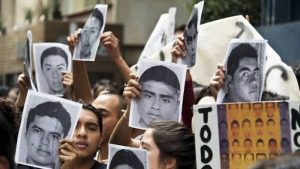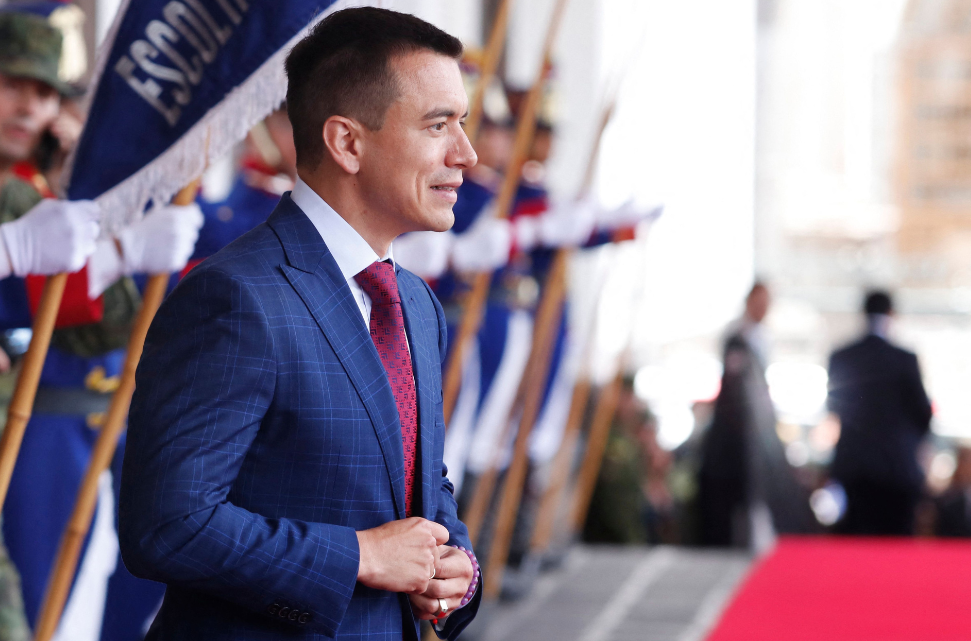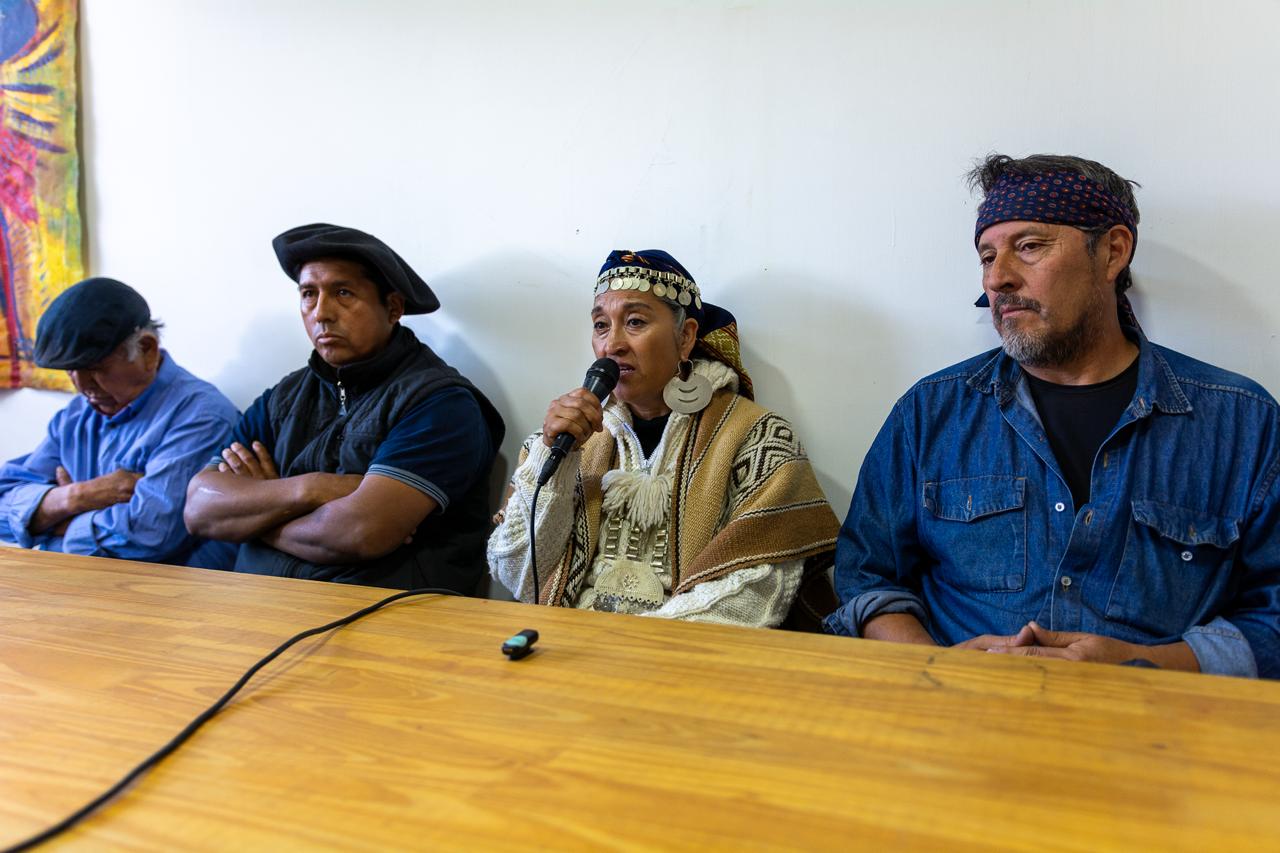 The five members of the Interdisciplinary Group of Independent Experts filed onto the makeshift stage and took their seats before some 1,000 people.
The five members of the Interdisciplinary Group of Independent Experts filed onto the makeshift stage and took their seats before some 1,000 people.
The audience anxiously awaited the second and final report of the group charged by the Organization of American States to investigate Mexico’s high-profile case of the 43 disappeared students of Ayotzinapa. Three hours later, their findings had established a pattern of obstruction, manipulation and lies by the government of President Enrique Peña Nieto
The Mexican public has closely followed the experts’ investigation, depositing in them the hopes for truth and justice that few believed would be fulfilled by the official investigation. The professional commitment and qualifications of the group—former Guatemalan Attorney General Claudia Paz y Paz, Chilean jurist Francisco Cox, Colombian lawyer and criminologist Angela Buitrago, Spanish psychologist Carlos Beristain and Colombian human rights lawyer Alejandro Valencia—opened up the possibility that for once a crime of the state would not be erased from Mexico’s selective memory.
The final report on one year and two months of work brought few real surprises. The first report, presented in September, caused a stir across the globe by documenting in 560 pages an unprecedented amount of hard information—unusual in a Mexican political case. Buitrago began the presentation of the second report stating that “there is no change in the facts to those that we presented in the previous report, and on the contrary, new evidence confirmed those findings…”
The group, known by its Spanish initials as GIEI, reiterated that the events of September 26 and 27 were actions coordinated among several government agencies, with the direct participation of at least the federal, state and municipal police, and a criminal organization. The report established the presence of the Mexican Army at the scene of the crime, and emphasized the importance of taking testimonies from the Army to clarify events and its role in them. The Army has refused repeatedly to allow the GIEI to interview Army personnel involved the night of the crime.
The evidence confirmed much of what Mexicans already suspected with scientific rigor and a thorough analysis of the documentation from government authorities, witnesses, material evidence and forensic tests. One by one, the GIEI unraveled the explanations of the federal Attorney General’s office, with emphasis on the new evidence discovered since the first report.
They discredited new government statements attempting to show that at least some of the students could have been burned at the Cocula dump for lack of consistency and proof, and questioned the process of the discovery of remains of the students in the San Juan River, presenting a new video that shows government officials in an unreported visit to the site the day before the remains were supposeldy discovered.
The official hypothesis that the mayor of Iguala and the municipal police, in the hands of organized crime, acted in an isolated manner was shot down by the facts leaving the state without a motive.
The Group of Experts insisted on the need to reincorporate evidence omitted in the case file, and to broaden the time frame and the geographical range of the investigation. They highlighted the issue of the fifth bus, which was mysteriously left out of the official investigation and could have been loaded with drugs or cash.
The five different versions proposed by the AG fell under their own contradictions and gaps. Without resorting to speculation, the international experts presented an overview of obstruction and stonewalling by numerous government offices, of tampering with evidence, of failure to follow basic investigative protocols, of torture and of lies. A pattern emerged of broken agreements, lines of investigation left hanging, non-compliance or late and incomplete compliance with requests for information, of contradictions and errors.
The experts expressed their immense disappointment at leaving the country without achieving their primary objective—to find the 43 students. They cited the obstacles and the authorities’ lack of cooperation. For example, on March 15 the group had received responses to barely half of the requests for information. Just days before they were to present the final presentation, they received an avalanche of responses that were impossible to analyze and incorporate into the second report. The last-minute document dump appeared to be a conscious mockery of the process, since the requests had been filed months ago with no response.
At the end of the presentation of findings, a woman in the crowd stood up and cried through tears, “Don’t go! Don’t leave us alone!” Her words went straight to the hearts of many present. Faced with the obvious frustration of the experts and the depressing end to a job that despite herculean efforts could not be completed, there was a sense of powerlessness, of helplessness like that of an abandoned child.
But Mexican civil society is no longer underage. It was civil society that made the tragedy of the death of six persons and the disappearance of the 43 students a cause célebrè throughout the world. It was civil society that mobilized more than 100,000 people to march with the slogan “It was the State!”, which forever changed the way we understand the violence afflicting our country.
The grassroots demonstrations forced the Mexican government to allow the invitation to the Interamerican Commission on Human Rights and to extend its original mandate. It was civil society that reactivated the search for the young men and initiated citizen searches for the disappeared in other parts of the country as well.
The departure of the group of experts leaves us with a huge debt to them for their commitment and their capacity to seek the truth and call out the lies. It also leaves us with a daunting agenda to resolve the Ayotzinapa crime and go much further in challenging the lack of justice in the nation.
As the Colombian lawyer Valencia pointed out, “The case of Ayotzinapa has presented the country with a dilemma from which it must emerge by way of strengthening the rule of law and the defense of human rights.”
Among the 22 recommendations, several have to do with demands on the government, which has stuck to its cover-up. Others must be assumed directly by civil society as part of a new Ayotzinapa Agenda.
The Ayotzinapa Agenda should include at least: taking up the search for the disappeared students and the other 28,000 disappeared in the country; guaranteeing the security of family members and human rights defenders; following up on unresolved questions such as the issue of the fifth bus that was escorted out of the scene of the crime that night by the federal police; insisting on the need to interview military personnel involved in the events; demanding new interviewing with witnesses and presentation and analysis of the missing phone registers; prosecuting or sanctioning government officials responsible for violation of procedures, tampering with, destruction of and loss of evidence, and distortion of the facts; following up on evidence of torture discovered in at least 17 of the accused; and tracing the masterminds of the crime in addition to the actual perpetrators.
One of the most important points that Mexican civil society should take on is analysis and investigation of the context of the crime, completely left out of the AG version. Crucial elements of context include: intense drug trafficking in the region, the generalized phenomenon of forced disappearance, and corruption at all levels of government.
The role of the Interamerican Commission on Human Rights has not ended with the exit of the GIEI. However, it now falls to Mexican society to assume the responsibility for continuing its work. The work isn’t so much technical, as political and social—it’s the work of mobilization, building solidarity and exerting constant pressure.
On this depends not only the resolution of the Ayotzinapa disappearances, but our capacity to pursue justice when confronted with a criminal state.



